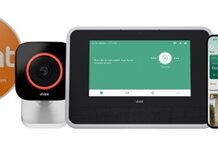
OPTEX, the global sensing and detection manufacturer, has expanded the offering of its range of award-winning Intelligent Visual Monitoring Solution with the launch of a new 12-channel Visual Verification Bridge in Europe and Africa.
The new 12-channel Bridge, powered by CHeKT, enables up to 12 ONVIF-compatible cameras and alarms to be managed through a single device, making it ideal for larger sites such as major depots and warehouses with constant activity 24/7. The choice of a four and now 12-channel device gives greater flexibility to customers managing multiple sites with multiple devices.
The Intelligent Visual Monitoring solution gives the ‘power of sight’ to monitored alarm systems, meaning triggered alarms can be visually verified within seconds and responded to accordingly. The OPTEX Bridge is the hardware device (gateway) that is physically connecting the indoor and/or outdoor intrusion sensors or the panic buttons with the IP cameras on site.
It can work with any legacy equipment as well as new systems. It provides a complete audit trail of activity and can detect when a camera is not working (i.e. when it has dropped out of the network), and report the fault, thus ensuring security is not compromised.
It communicates via a gated Cloud portal with the Alarm Receiving Centre (ARC) or monitoring station in the appropriate ‘language’, having integrated with all major monitoring software platforms. It will, in effect, work with virtually any intruder alarm technology, or any alarm device with a relay output and any ONVIF camera to deliver one seamless visual verification solution.
Monitoring stations have the ability to provide an easy-to-install and cost-effective visual verification service to residential and commercial sites; the Bridge can be installed and working within the hour. The Cloud-hosted platform also allows a stronger collaboration between the ARCs and the home/business owners by having the ability to share video clips to confirm the alarms while respecting any privacy guidelines through its bespoke privacy feature that only end-users can release











